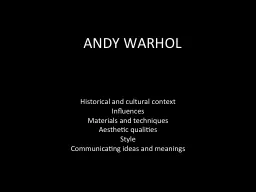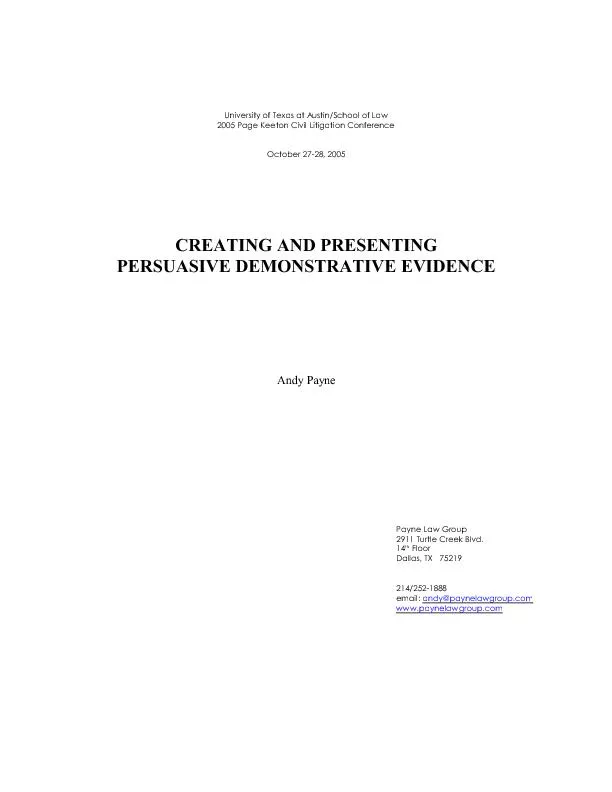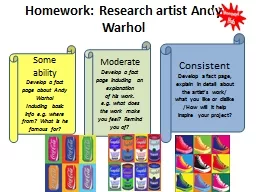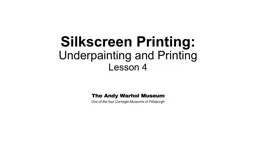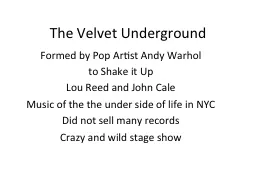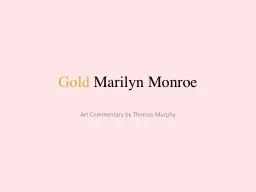PPT-ANDY WARHOL
Author : kittie-lecroy | Published Date : 2017-11-06
Historical and cultural context Influences Materials and techniques Aesthetic qualities Style Communicating ideas and meanings Andy Warhol Silver Liz Ferus type
Presentation Embed Code
Download Presentation
Download Presentation The PPT/PDF document "ANDY WARHOL" is the property of its rightful owner. Permission is granted to download and print the materials on this website for personal, non-commercial use only, and to display it on your personal computer provided you do not modify the materials and that you retain all copyright notices contained in the materials. By downloading content from our website, you accept the terms of this agreement.
ANDY WARHOL: Transcript
Download Rules Of Document
"ANDY WARHOL"The content belongs to its owner. You may download and print it for personal use, without modification, and keep all copyright notices. By downloading, you agree to these terms.
Related Documents

